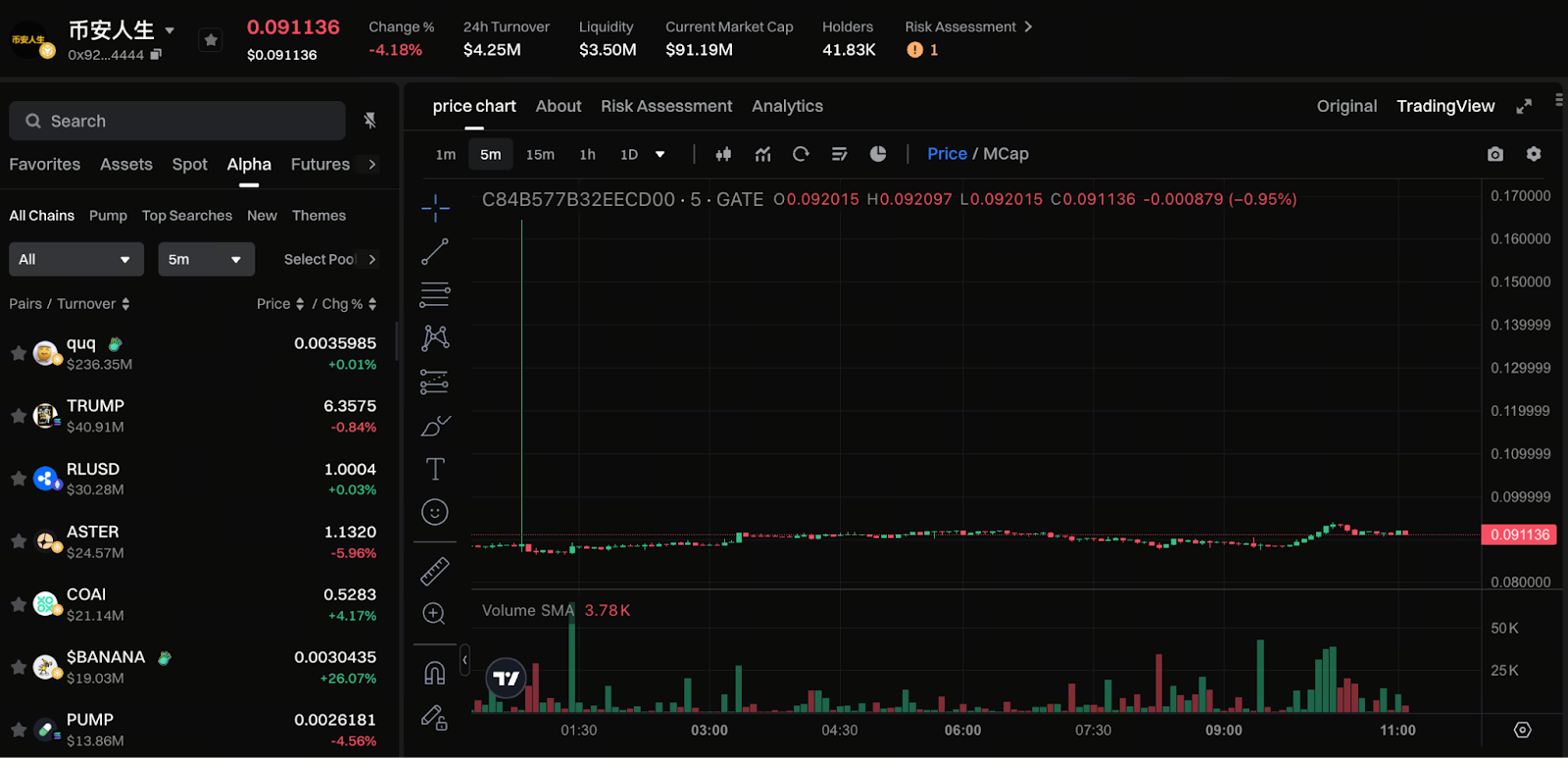Binance-Linked Tokens Plunge: “Binance Life” Market Cap Falls Below $100 Million
Binance Ecosystem Volatility Overview

Chart: https://www.gate.com/alpha/bsc-0x924fa68a0fc644485b8df8abfa0a41c2e7744444
As one of the world’s largest digital asset platforms, Binance operates not only as an exchange but also as an issuer, incubator, and supporter of diverse on-chain assets. When market sentiment weakens, projects within its ecosystem often bear the brunt of these shifts. Currently, we observe the following:
- Binance Coin (BNB) has declined recently, with a 7-day loss of roughly 7.4%.
- Peripheral ecosystem projects—such as Binance Life and GIGGLE—have also retreated, facing intensified selling pressure.
Overall, assets connected to the Binance ecosystem are experiencing downward inertia, and confidence risks are emerging.
Reasons Behind Binance Life’s Market Cap Dropping Below $100 Million
While “Binance Life” is less mainstream than BNB, it remains a focus within the Binance Chain ecosystem. Its market capitalization falling below $100 million reflects several contributing factors:
- Liquidity withdrawal: Amid broad market selloffs, investors tend to exit high-risk affiliated tokens.
- Weak ecosystem connection: Projects lacking strong ties to Binance’s core platform or mainnet support can see market trust erode rapidly.
- Accumulating macro risks: Tightening conditions across the crypto market—driven by regulatory pressure, interest rate changes, and shifting sentiment—accelerate declines in peripheral assets.
- Limited technical support: When there’s no strong upward momentum or active ecosystem engagement, token prices are prone to slip.
Thus, the sharp drop in Binance Life’s market cap is not an isolated incident but a typical example of ecosystem-driven chain reactions.
Other Related Tokens: $4 and GIGGLE’s Downward Movement
This round of declines has affected not only Binance Life but also other assets tied to the Binance ecosystem or its on-chain projects. For instance, GIGGLE:
- GIGGLE currently holds a market cap of approximately $108 million.
- It has dropped nearly 18.7% over the past 7 days.
Despite a minor rebound recently, the overarching trend remains weak. The token “4” is also on a downward trajectory. The consensus in the market is that “when core tokens like BNB fall and ecosystem confidence wanes, non-core assets are first to be repriced.”
Impact of Sentiment, Technicals, and Macro Factors
This downturn is not occurring in isolation—it’s driven by multiple overlapping factors:
- Weakened sentiment: Liquidity is tightening across the crypto market, leading to lower risk appetite.
- Technical breakdown: BNB has breached key support levels, including $950.
- Macroeconomic pressures: Regulatory uncertainty, inflation, and a stronger US dollar are weighing on crypto valuations.
- Ecosystem trust risks: Volatility in core platforms or ecosystem projects makes peripheral tokens especially vulnerable.
Investors who ignore these underlying factors and enter positions simply because a project is “Binance-branded” face extremely high risks.
Investor Strategies
Given current conditions, consider the following approaches (for reference only, not financial advice):
- Select entry points with caution: Prioritize mainstream tokens with robust ecosystems, trusted capital, and high liquidity.
- Maintain risk controls: Use stop-loss orders, diversify holdings, and avoid concentrated positions in peripheral assets.
- Monitor ecosystem activity and announcements: Tokens with weak support, infrequent updates, or low trading volume should be treated as high risk.
- Stay attuned to sentiment: During periods of market fear or steep declines, exercise added caution and avoid chasing rallies.
- Adopt a long-term perspective: If volatility is short-term and fundamentals are strong, consider accumulating on dips; if fundamentals deteriorate, exit promptly.
In sum, the sharp drop in Binance-related assets serves as a reminder that ecosystem affiliation is no guarantee—peripheral projects are especially susceptible to market elimination. Sound investment decisions depend on understanding both project fundamentals and market dynamics, not simply relying on brand association. Prudent investors can better manage risk and respond calmly to market shifts.
Related Articles

Pi Coin Transaction Guide: How to Transfer to Gate.io

Flare Crypto Explained: What Is Flare Network and Why It Matters in 2025

How to Use a Crypto Whale Tracker: Top Tool Recommendation for 2025 to Follow Whale Moves

2025 BTC Price Prediction: BTC Trend Forecast Based on Technical and Macroeconomic Data

What is N2: An AI-Driven Layer 2 Solution
